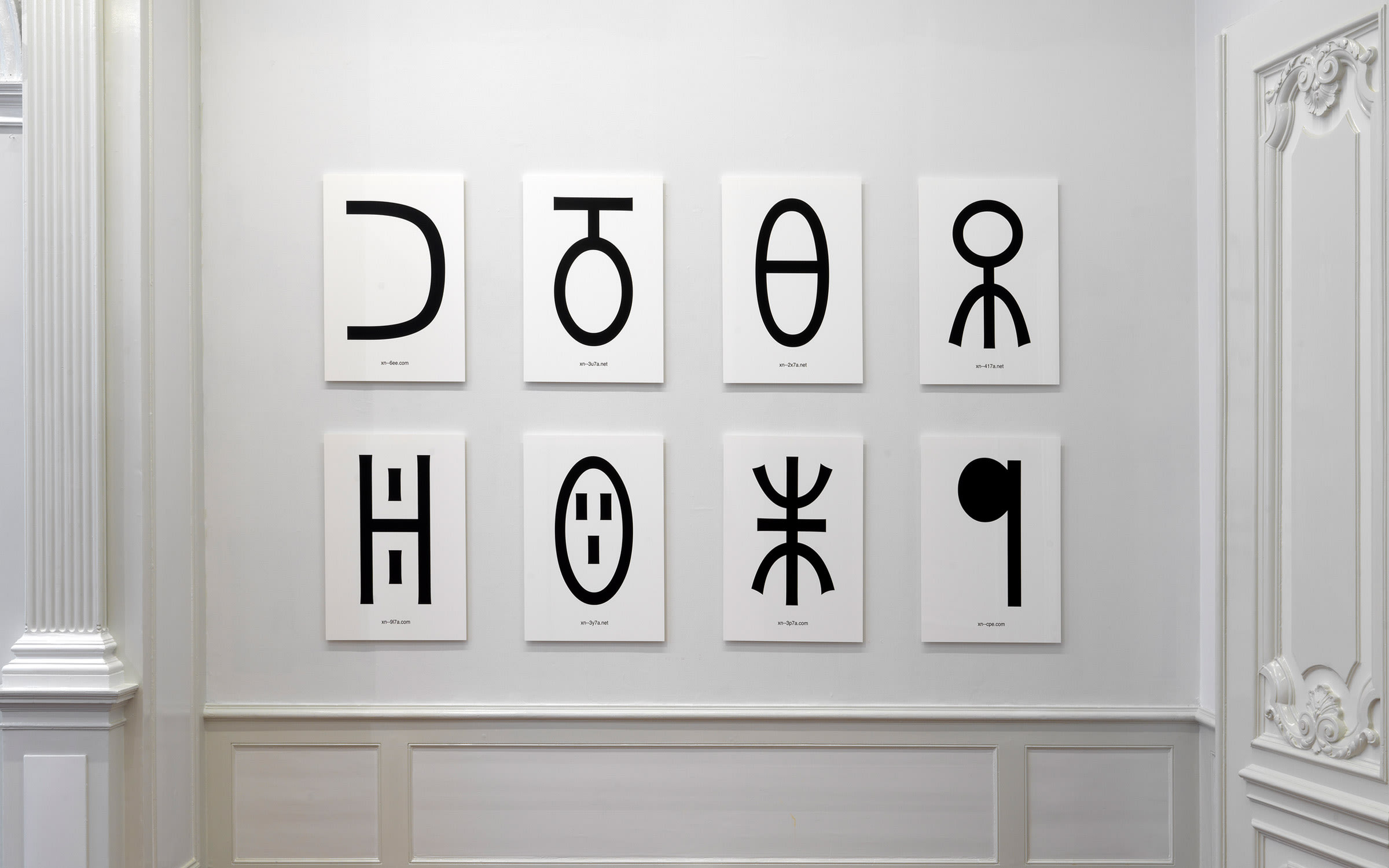How we became artists: Net Art duo JODI
Starring in Upstream Gallery's Online Viewing Room, Joan Heemskerk and Dirk Paesmans talk Silicon Valley, World Wide Web, and turning code into art
Log in and subscribe to receive Art Basel Stories directly in your inbox.
Ahead of their presentation in Art Basel’s Online Viewing Rooms, Net Art pioneers JODI talked to Mirthe Berentsen. This was no small feat: The collective’s two members, the serial provocateurs Joan Heemskerk (b. 1968, the Netherlands) and Dirk Paesmans (b. 1965, Belgium), are notorious for refusing to analyze their practice. ‘What you see is what you get,’ they say. ‘We don’t explain our work.’ In this rare interview, they go back to their first computer-generated artwork, the birth of the World Wide Web, and Silicon Valley’s early days. ‘Looking back is a sentimental journey of sorts,’ says Paesmans.
Dirk Paesmans: All these postgraduate academies are like marriage-makers. We met in 1992 at the Jan van Eyck Academie in Maastricht.
Joan Heemskerk: In our second year, computers were introduced with the arrival of a new design department. As I was working with photography at the time, I was often waiting outside the darkroom, and the computer room was also based in the cellar. The ‘computer people’ had to render stuff and wait for a long time. At some point, they explained to me what I could do with computers. I ended up doing my first experiments with Photoshop 1 there. We had no knowledge of coding, so we just used the programs and experimented with the new possibilities.
DP: Computers were relatively new as a medium, and mostly used for animations and graphic stuff. We were already dealing with mass media in our work, and had a background in television and photography, so for us [moving on to computers] was a logical next step. Together with Gerald Van Der Kaap, we made a CD-ROM, trying to turn the computer into an artistic medium.
JH: Van Der Kaap made BlindRom v0.9 [1993] and the Photoshop experiments became part of that CD-ROM. Then I had to learn how to program MacroMind to make CD-ROMs. That was all long before the Internet. We then moved to CADRE Laboratory for New Media at San José State University for a residency. We wanted to look at the history of computers, unrelated to art history, and the importance of networking, the political implications of the American hegemony in computer science, the differences in interfaces, hacking culture…It was an interesting time to be in Silicon Valley.
DP: The students came to school in shorts and flip-flops, and while waiting for a rendering they would just put their bare feet on the computers. For us that was shocking! We were used to signing a lot of paperwork before we were even allowed to touch the machines. Their attitude towards the hardware was very different – for them it was just a piece of plastic to perform a job.
JH: At that time, we bought our first computer and made our first website. We would sit together behind that computer with one mouse, one keyboard, and just argue all the time. It was like two people trying to make a painting, it was impossible.
DP: In the beginning we were just so excited about our discovery and using and misusing the tools available to us. What we were doing didn’t exist yet, there was not even a name for it! Only much later was it described as Net Art. After a few months, the World Wide Web began and, for us, that was a major push towards the medium.
JH: That landscape changed drastically over the years, everything became more mainstream and commercial. As hacker Rop Gonggrijp said, ‘We lost it.’ We lost the people’s medium and it completely changed into a corporate medium.
DP: So looking back is also a sentimental journey of sorts.
JH: However, we’ve been always very aware of the fact that a computer is a very personal space and that is something that didn’t change over the years. The hardware changed, the politics, the speed, and the material, but the awareness of the space didn’t change that much. Working on a computer is like writing – it’s just you.
DP: In a way, it’s all a big performance. The code performs together with the software in your browser. Your browser is empty and ready, but performs and translates through the cable, the connection, and the code.
JH: The web is like a broadcast and a performance at the same time.
DP: We used the symbol of the Tower of Babel a few times. It comes from our fascination with Pieter Bruegel. He experimented a lot with the then-new medium of letterpress and made thousands of prints, as he was intrigued by the speed with which his work could be distributed. His paintings were, to him, secondary, something he could sell to rich people. We are dealing with very similar issues – the Tower of Babel is about the impossibility of one culture, one language, through which we can all communicate with each other – something that will never be achieved. We play with that concept in many works, like IDN [2016] [a series of websites using single Unicode glyphs as domain names (A/N)] or \/\/iFi [2019]. The tower is a cultural construction of different codes, languages, and symbols for the way we see the Internet.

Mirthe Berentsen is a writer, cultural policy officer, and journalist based in Berlin and Amsterdam.
JODI is represented by Amsterdam’s Upstream Gallery, which is showing their work in its Online Viewing Room.

